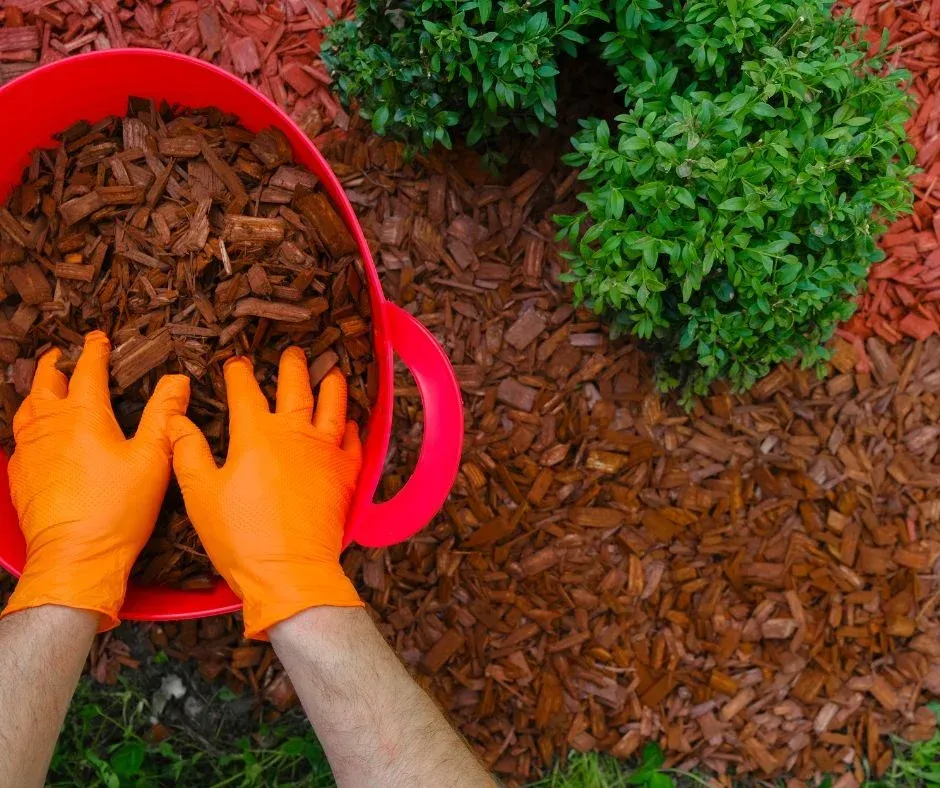Mulch Application Tips for Tree and Shrub Plantings

Mulching is a fundamental practice in landscaping that provides numerous benefits to the health and vigor of trees and shrubs. When applied correctly, mulch can conserve moisture, suppress weeds, regulate soil temperature, and enhance the aesthetic appeal of your garden. Here are some expert tips for effective mulch application in tree and shrub plantings:
- Choose the Right Mulch: Opt for organic mulches like wood chips, shredded bark, or compost. These materials gradually decompose, enriching the soil with essential nutrients. Avoid using rubber mulch or inorganic materials, as they do not contribute to soil health.
- Prepare the Area: Before mulching, remove any weeds, grass, or debris from the planting area. This ensures that the mulch makes direct contact with the soil and doesn't provide a habitat for pests or diseases.
- Apply Correctly: Spread mulch evenly around the base of the tree or shrub, creating a layer approximately 2 to 4 inches deep. Avoid piling mulch against the trunk or stems, as this can promote rot and provide hiding places for pests.
- Leave Space Around the Trunk: Keep mulch a few inches away from the trunk or stems of trees and shrubs. This prevents excess moisture accumulation and discourages pests and diseases from attacking the plant.
- Consider Mulch Rings: For trees, create mulch rings with a diameter of at least 3 feet. This helps to cover the root zone adequately and prevents damage from lawnmowers and trimmers.
- Refresh Mulch Regularly: Over time, mulch decomposes and may need replenishing. Check the depth of mulch annually and add more as necessary, maintaining the 2 to 4-inch layer.
- Mulch Newly Planted Trees and Shrubs: Mulching is especially beneficial for newly planted trees and shrubs as it helps retain moisture and reduce stress during establishment. Apply mulch immediately after planting, ensuring it doesn't touch the trunk or stems.
- Monitor Moisture Levels: While mulch conserves moisture, it's essential to monitor soil moisture regularly, especially during hot and dry periods. Water as needed to keep the soil consistently moist but not waterlogged.
- Avoid Volcano Mulching: Never pile mulch against the base of trees or shrubs in a volcano shape. This common mistake can lead to root suffocation, stem rot, and pest infestations.
- Mulch Seasonally: Mulching can be done at any time of the year, but spring and fall are ideal. In spring, apply mulch after the soil has warmed to retain moisture and suppress weeds. In the fall, mulch helps insulate soil and protect roots from temperature fluctuations.
By following these mulch application tips, you can enhance the health and beauty of your tree and shrub plantings while minimizing maintenance and promoting sustainable gardening practices.
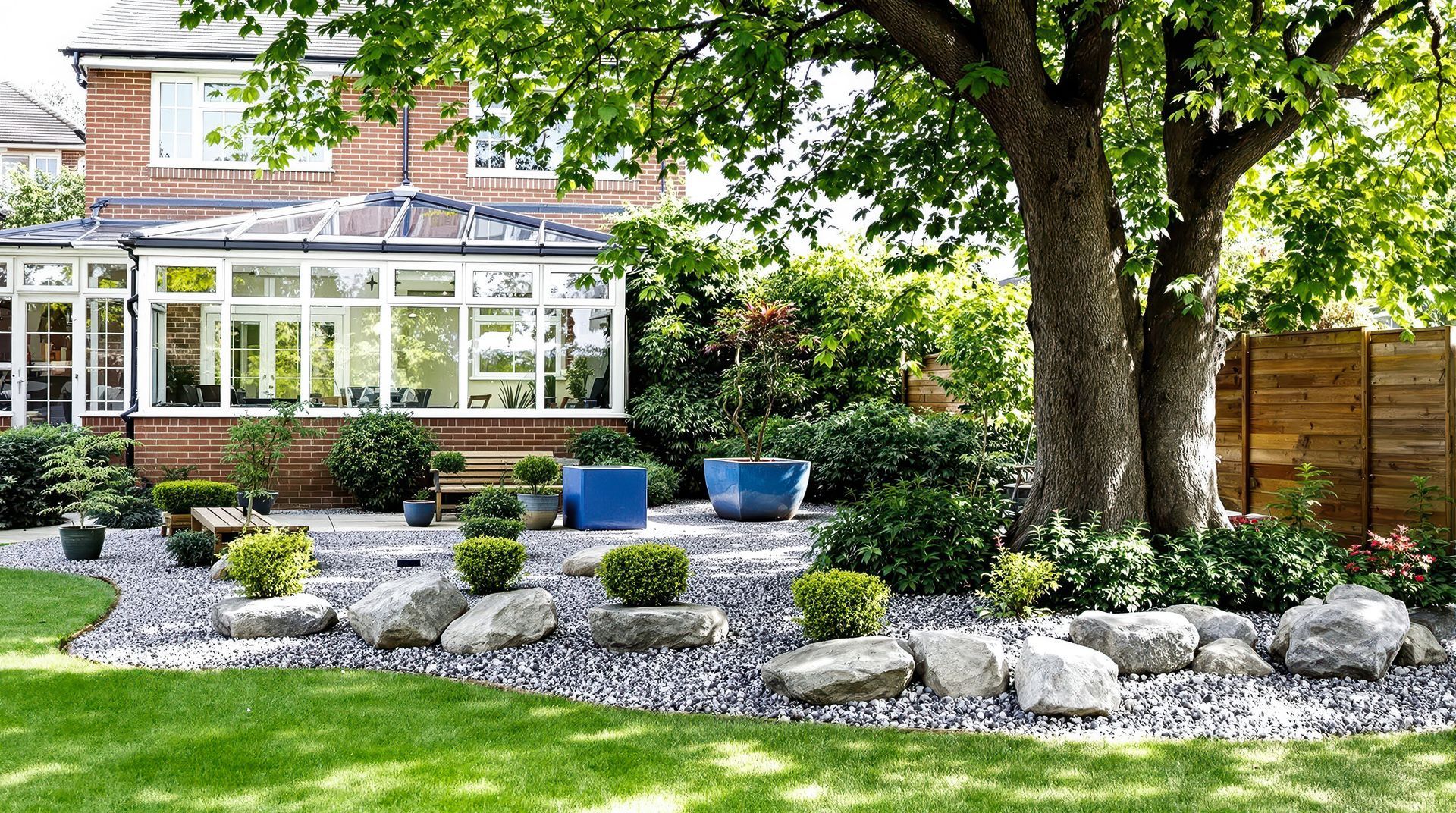
Crushed rock is a durable, low-maintenance material widely used in San Diego landscapes for pathways, garden beds, driveways, and decorative features. While it requires less upkeep than many other materials, regular maintenance ensures that it stays clean, functional, and visually appealing. In this blog post, we’ll share practical tips for maintaining your crushed rock landscape and how to prevent or fix common issues like weed growth and erosion. Why Crushed Rock Needs Maintenance Although crushed rock does not decompose or require watering, it is still exposed to the elements. Over time, weeds can creep in, debris can accumulate, and loose rock can shift or settle. Routine care helps protect your investment and keeps your landscape looking polished. Tips for Keeping Crushed Rock Areas Clean and Attractive 1. Rake Regularly Use a hard-toothed rake to smooth out uneven areas, redistribute rock that may have shifted, and remove surface debris. Raking once every few weeks helps maintain a clean, even appearance. 2. Remove Debris and Organic Material Leaves, twigs, and other debris can build up and create a breeding ground for weeds. Explicit organic material regularly, especially during the fall or after storms, to keep the area tidy and reduce soil buildup. 3. Top Off Low Spots Over time, some rock may migrate or settle. Periodically inspect the area and add fresh crushed rock to maintain consistent depth and appearance. This also helps with drainage and weed suppression. 4. Power Wash or Hose Down When Needed For decorative rock used in high-visibility areas, hosing off dust and dirt can restore the color and freshness of the stone. Use a garden hose with a spray nozzle or a light-pressure power washer. Preventing and Managing Weed Growth Weeds are the most common issue in crushed rock landscapes. They can spoil the clean look of your yard and compete with nearby plants for nutrients and water. 1. Install a Weed Barrier Fabric When laying crushed rock, always start with a high-quality landscape fabric underneath. This creates a physical barrier that blocks weed roots from penetrating while still allowing water to drain through. 2. Apply a Pre-Emergent Herbicide Use a pre-emergent weed control product in early spring to prevent weed seeds from germinating. Be sure to choose a product appropriate for use around ornamental plants if your rock is near garden beds. 3. Spot-Treat or Pull Weeds Promptly Occasional weeds may still appear, especially around the edges or in disturbed areas. Pull them by hand or treat with a targeted herbicide before they spread. Removing them early prevents seed dispersal and saves time later. 4. Maintain Proper Rock Depth A layer of crushed rock that is at least 2 to 3 inches deep provides better weed suppression. If the layer is too thin, light can reach the soil, encouraging weed growth. Preventing and Addressing Erosion Crushed rock can shift or wash away in areas with heavy rainfall or on sloped surfaces. Taking preventive measures will preserve the integrity of your design. 1. Edge the Area with Borders Use edging materials such as metal, wood, concrete, or stone to contain the rock and prevent it from spreading into unwanted areas. Edging also gives pathways and beds a finished, professional look. 2. Compact and Level the Base Before installing crushed rock, ensure the base soil is compacted and level. For driveways or sloped pathways, consider using a mix of crushed rock and fines to create a more stable surface. 3. Add Retaining Features for Slopes In sloped areas, install low retaining walls or terracing to hold rock in place and reduce downhill movement. You can also use jute netting or grid mats beneath the rock for extra stability. 4. Improve Drainage Where Needed If water frequently washes away rock, install drainage channels or dry creek beds to redirect the flow. Proper drainage keeps the rock in place and protects against pooling or flooding. Conclusion Maintaining a crushed rock landscape is relatively simple, but consistent attention is essential to ensure your outdoor space remains clean, attractive, and functional. With a few proactive steps, you can prevent weed growth, minimize erosion, and keep your landscape looking great year-round. At North County Supply, we offer high-quality crushed rock, weed barriers, and expert advice to help you build and maintain your ideal landscape. Stop by or contact us today to learn more about materials and maintenance tips for your next project.

Healthy soil is the foundation of a successful garden. Yet many gardeners skip one of the most essential steps before planting: testing their soil. Soil testing gives you critical information about nutrient levels, pH balance, and overall soil health, helping you make informed decisions that lead to more vigorous plants and better yields. In this blog post, we’ll explain why soil testing is important, how to test your soil at home or professionally, and how to interpret your soil test results. Why Soil Testing Matters Whether you're planting vegetables, flowers, or native landscaping, your soil's composition directly affects plant health. A soil test helps answer essential questions: Does your soil have enough nutrients to support healthy growth? Is the pH level appropriate for the plants you want to grow? Are there any nutrient excesses that could be harmful? Without testing, you're left guessing. You might over-fertilize, underfeed, or plant in unsuitable conditions without even realizing it. Soil testing helps you avoid these common mistakes, saves money on unnecessary products, and promotes environmentally responsible gardening. How to Test Soil at Home or Professionally At-Home Soil Testing Kits DIY soil testing kits are available at garden centers and hardware stores. They provide basic information about pH and nutrient levels like nitrogen, phosphorus, and potassium. Steps to use a home soil test kit: Collect soil samples from several spots in your garden, digging 4 to 6 inches deep. Mix the samples together in a clean container to get an average representation of your garden soil. Follow the test kit instructions , typically involving mixing soil with a solution and comparing the color to a chart. Record your results and compare them with your plant’s nutrient and pH requirements. These tests are affordable and provide quick insights, but they may lack the accuracy and depth of professional testing. Professional Soil Testing For more comprehensive results, consider sending your soil to a professional lab. This is especially helpful if you're establishing a new garden, planting specialty crops, or troubleshooting poor plant performance. How to get your soil professionally tested: Contact a local cooperative extension, university lab, or private soil lab. Use a clean tool to collect multiple samples from your garden. Let the soil air dry and send the sample according to the lab's instructions. Most labs provide a detailed report within one to two weeks, often with recommendations based on your intended plant types. Professional testing evaluates additional elements, such as calcium, magnesium, sulfur, and micronutrients, providing a more comprehensive picture of your soil's health. Interpreting Soil Test Results Once you receive your soil test results, it’s time to put them to use. Most test reports include the following: pH Level The pH scale runs from 0 to 14. Most garden plants prefer a slightly acidic to neutral range (6.0 to 7.0). If the pH is too high (alkaline) or too low (acidic), plants may not absorb nutrients efficiently. Low pH (acidic): Add lime to raise pH. High pH (alkaline): Add sulfur or organic matter to lower pH. Macronutrients Nitrogen (N): Essential for leafy growth. Deficiencies lead to yellowing leaves and stunted growth. Phosphorus (P): Supports root development and flowering. Low levels reduce bloom production. Potassium (K): Aids in overall plant health, drought resistance, and disease prevention. A soil test will indicate whether these are low, adequate, or excessive. Based on the results, you can choose the right type and amount of fertilizer or soil amendment. Micronutrients Professional tests may include levels of iron, manganese, zinc, copper, and boron. While needed in smaller quantities, these elements are still essential for plant health. Organic Matter and Texture Some tests will also assess the percentage of organic matter and soil texture (comprising sand, silt, and clay). This helps determine how well your soil holds moisture and nutrients. Final Thoughts Soil testing is a simple yet powerful step in building a healthy, productive garden. Whether you're growing vegetables, ornamentals, or drought-tolerant landscapes in San Diego, understanding your soil's condition will guide you toward better choices and better results. At North County Supply , we offer quality soil amendments, compost, and mulch to help you act on your test results and build better soil. Need help interpreting your soil report? Our team is happy to point you in the right direction. Contact us or stop by today to learn more.

Healthy soil is the foundation of a vibrant and productive garden. Whether you're growing vegetables, flowers, or drought-tolerant plants, improving your soil quality can make all the difference in plant health, resilience, and overall garden success. In this blog post, we’ll explore proven methods to boost soil fertility, the benefits of organic amendments and composting, and tips for maintaining healthy soil structure in your San Diego landscape. Why Soil Quality Matters Soil does more than hold up your plants—it provides them with essential nutrients, water, oxygen, and a thriving ecosystem of beneficial organisms. Poor-quality soil can lead to weak growth, nutrient deficiencies, pest problems, and wasted time and money. But with the right techniques, you can turn tired, compacted, or nutrient-poor soil into a thriving garden bed. 1. Methods to Improve Soil Fertility Improving soil fertility means increasing the nutrient content available to plants and enhancing the soil's ability to hold moisture and support microbial life. Here are some effective ways to do just that: Add Organic Matter Incorporating organic matter is one of the best ways to boost soil fertility. Organic materials, such as compost, aged manure, or leaf mold, break down slowly and release nutrients over time. Tip: Mix 2–4 inches of organic matter into the top 6–8 inches of soil before planting. Repeat this process once or twice a year to maintain fertility. Rotate Crops If you grow vegetables or annuals, rotating crops each season can help prevent nutrient depletion and reduce the risk of soil-borne diseases. Example: Avoid planting tomatoes in the same spot each year. Instead, rotate with legumes like beans or peas, which add nitrogen to the soil. Use Cover Crops (Green Manure) Cover crops like clover, vetch, or rye are grown specifically to improve soil health. They help fix nitrogen, prevent erosion, and add organic material when tilled back into the soil. Best Time: Plant cover crops during the off-season (fall or winter in San Diego) and till before spring planting. 2. Benefits of Organic Amendments and Composting Organic amendments and compost provide a slow, steady release of nutrients, improve soil structure, and promote a healthy soil ecosystem. Here’s why they’re so valuable: Compost Compost is decomposed organic matter that enriches soil with essential nutrients and beneficial microbes. It improves the texture of both clay and sandy soils, making it easier for plant roots to grow. Benefits: Adds nutrients like nitrogen, phosphorus, and potassium. Improves soil aeration and water retention. Encourages earthworm activity and beneficial microbes. Aged Manure Properly aged (or composted) animal manure is a powerful soil amendment that is rich in nutrients and organic material. Caution: Always use well-aged manure to avoid burning plants and introducing pathogens. Avoid using pet waste or fresh manure. Mulch as an Amendment Organic mulches like wood chips and straw slowly break down and contribute to soil health. Over time, they act as a natural compost layer while controlling weeds and conserving moisture. Tip: Top-dress beds with 2–3 inches of mulch and allow it to naturally integrate into the soil. 3. Tips for Maintaining Healthy Soil Structure Good soil structure allows air and water to flow freely while supporting root development. Poor structure—often caused by compaction or overworking the soil—can lead to drainage problems and root stress. Avoid Over-Tilling Excessive tilling breaks up soil aggregates and harms beneficial organisms. Use tilling sparingly and only when necessary. Alternative: Consider no-till or low-till gardening methods that maintain soil structure and reduce disturbance. Prevent Soil Compaction Walking on garden beds can compress the soil, limiting root growth and water absorption. Solution: Create designated pathways and use stepping stones to avoid walking directly in growing areas. Keep Soil Covered Bare soil is vulnerable to erosion, drying out, and weed invasion. Cover it with mulch, plants, or a living ground cover to protect and nourish the soil. Tip: In between planting seasons, use a layer of mulch or a cover crop to protect soil health. Conclusion Healthy soil is the key to a thriving, low-maintenance garden. By incorporating organic matter, rotating crops, and using compost and mulch, you’ll improve soil fertility and structure naturally. Whether you’re starting a new garden or revitalizing an existing one, these soil-improving techniques will create a strong foundation for years of beautiful growth. At North County Supply , we offer high-quality soil amendments, compost, and mulch to help San Diego gardeners build and maintain healthy soil. Stop by or give us a call to learn more about the best products for your garden!
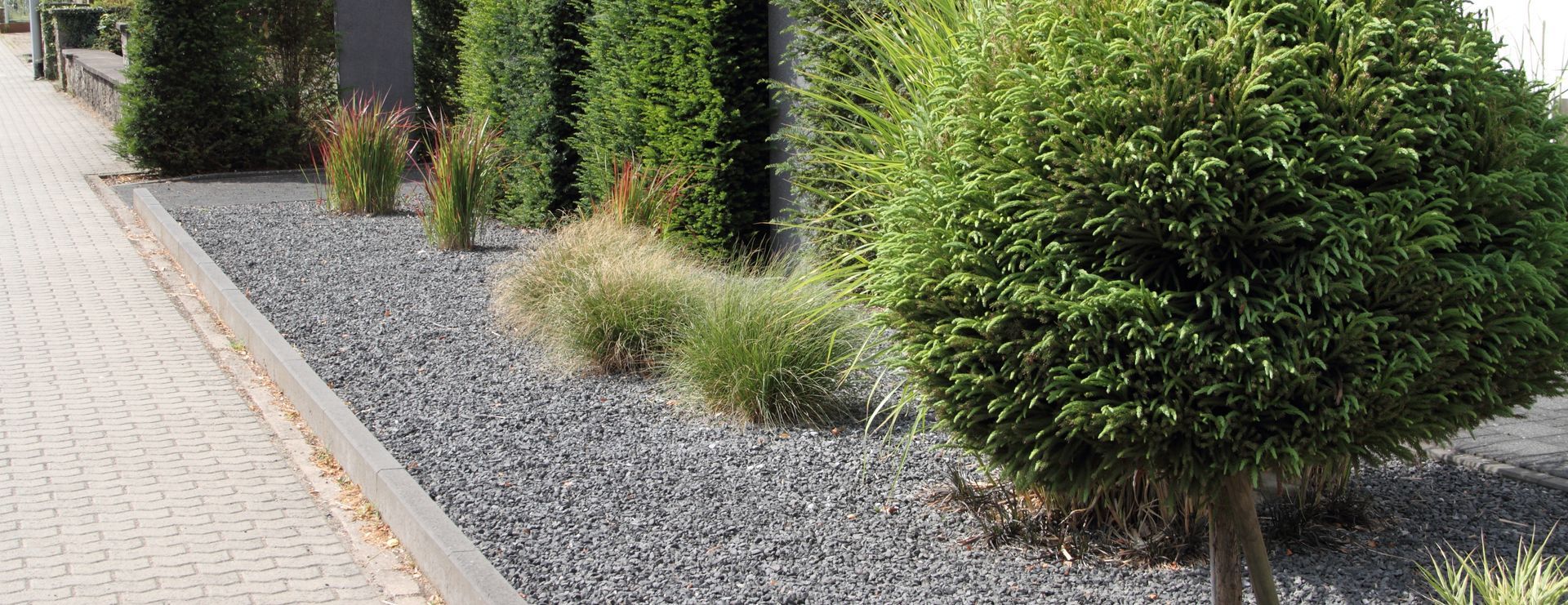
When it comes to landscaping, choosing the right materials is essential for both aesthetic appeal and cost-effectiveness. While options like wood mulch, pavers, and sod can create beautiful outdoor spaces, aggregate—such as crushed rock, gravel, and decomposed granite—offers a budget-friendly and long-lasting alternative. In this blog, we’ll compare the cost of aggregate to other landscaping materials and explore its long-term savings and benefits, making it a smart investment for homeowners and businesses alike.
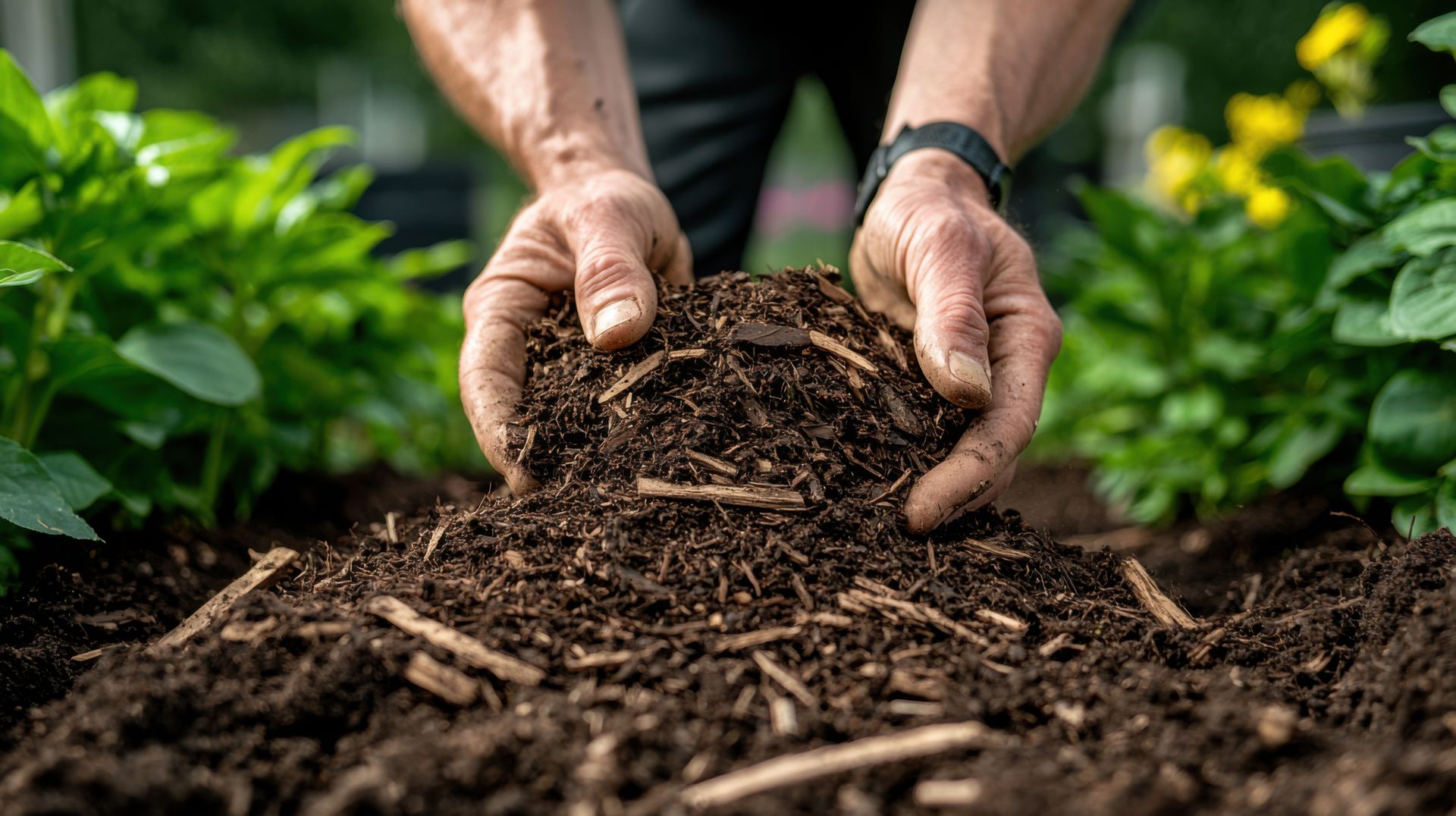
Mulch is a game-changer for any garden, offering benefits like moisture retention, weed control, and soil improvement. However, not all mulch is created equal, and choosing the right type for your San Diego garden requires careful consideration of the local climate, your plant’s needs, and your long-term landscaping goals. We’ll compare organic and inorganic mulch and provide tips to help you select the best option for your unique garden. Organic vs. Inorganic Mulch: What's the Difference? Organic Mulch Organic mulch is made from natural materials that decompose over time, adding nutrients to the soil. Examples include wood chips, bark, straw, grass clippings, and compost. Advantages: Soil Enrichment: As it breaks down, organic mulch improves soil structure and fertility, promoting healthier plants. Eco-Friendly: Organic mulch recycles natural materials and reduces waste. Wide Availability: Easily sourced from garden centers or even your yard waste. Drawbacks: Maintenance: Requires replenishment as it decomposes. Pest Attraction: Certain types, like straw or grass clippings, can attract pests if not properly managed. Best For: Flower beds, vegetable gardens, and areas where soil health is prioritized. Inorganic Mulch Inorganic mulch includes gravel, stones, rubber mulch, and landscape fabric. These materials do not decompose, making them a more permanent solution. Advantages: Low Maintenance: Inorganic mulch doesn’t break down, meaning less upkeep over time. Durability: Ideal for high-traffic areas or regions prone to harsh weather. Aesthetic Appeal: Comes in various colors and sizes, perfect for modern or minimalist garden designs. Drawbacks: No Soil Improvement: Unlike organic mulch, inorganic materials don’t add nutrients to the soil. Cost: Can be more expensive initially compared to organic options. Heat Retention: Some inorganic materials, like rubber mulch, can retain heat, potentially stressing plants in hot climates like San Diego. Best For: Pathways, rock gardens, xeriscaping, and decorative purposes. Tips for Selecting Mulch Based on San Diego’s Climate and Plant Needs San Diego’s climate is characterized by mild winters, warm summers, and minimal rainfall, making mulch a vital tool for conserving water and maintaining healthy soil. Here are some tips to guide your choice: 1. Consider Water Conservation In San Diego's dry climate, retaining soil moisture is crucial. Organic mulch, such as bark or wood chips, works well in garden beds to keep the soil cool and prevent evaporation. For drought-tolerant landscaping, gravel or decorative stones can complement succulents and other xeriscape plants while reducing water needs. 2. Match Mulch to Your Plants Vegetable Gardens: Opt for organic mulch like straw or compost. These materials break down quickly, enriching the soil and benefiting nutrient-hungry crops. Flower Beds: Use shredded bark or wood chips to maintain a polished look and suppress weeds. These mulches also decompose slowly, providing long-lasting benefits. Native and Drought-Tolerant Plants: Gravel or decomposed granite perfectly matches succulents and drought-resistant plants, offering excellent drainage and a natural aesthetic. 3. Account for Heat Retention Some mulches, like rubber or dark-colored stones, can absorb and retain heat, which may stress your plants during San Diego’s hotter months. Choose lighter-colored stones or organic mulch to reflect heat and cool your soil. 4. Balance Aesthetics and Functionality While appearance matters, functionality should guide your mulch choice. For example, decorative rock might look stunning in a modern garden, but it won’t provide the soil-enriching benefits of organic mulch. Consider combining organic and inorganic mulch for different landscape areas to achieve beauty and functionality. 5. Plan for Maintenance If you prefer a low-maintenance garden, inorganic mulch like landscape fabric covered with gravel is a great option for weed suppression. However, if you’re willing to invest time in replenishing your mulch, organic materials offer greater benefits for soil health. Conclusion Choosing the right mulch for your San Diego garden can significantly impact its health and appearance. Organic mulch is ideal for enriching the soil and supporting plant growth, while inorganic mulch offers durability and low maintenance, making it perfect for decorative or high-traffic areas. By considering your local climate, plant needs, and long-term goals, you can make an informed decision that enhances the beauty and sustainability of your garden. Ready to start mulching? Contact North County Supply for a wide selection of high-quality organic and inorganic mulch options tailored to San Diego's unique climate and landscaping needs. Your perfect garden is just a layer of mulch away!

Crushed rock is a versatile and durable material that can transform the look and functionality of any landscape. Crushed rock offers numerous advantages, whether you're designing a low-maintenance garden, creating pathways, or building hardscape features. In this blog post, we’ll explore the key benefits of using crushed rock in your landscape design, such as its durability, low maintenance requirements, and aesthetic appeal. We'll also highlight real-world examples of successful landscaping projects that have utilized crushed rock effectively. 1. Durability One of the standout benefits of using crushed rock in landscape design is its durability. Unlike organic materials like wood mulch or grass, crushed rock is highly resistant to weather conditions, erosion, and the wear and tear of foot traffic. This makes it ideal for pathways, driveways, and high-traffic areas. Long-Lasting: Crushed rock doesn’t decompose over time, unlike organic mulch, which requires regular replenishment. Once installed, it can last for years with minimal upkeep. Weather Resistant: I t holds up well in both wet and dry climates, resisting water runoff and helping to prevent soil erosion. Its durability ensures it maintains its structure, even after heavy rains or scorching heat. 2. Low Maintenance Crushed rock is a low-maintenance option that significantly reduces the time and effort required to care for your landscape. Once laid down, it needs little attention compared to lawns, flower beds, or other landscape features. Weed Control: When installed properly with a weed barrier underneath, crushed rock suppresses weeds by blocking sunlight, reducing the need for chemical weed control or regular weeding. No Watering Required: Unlike grass or plants, crushed rock doesn’t need watering, making it an excellent choice for drought-prone areas or homeowners looking to reduce water usage. Minimal Upkeep: Crushed rock doesn’t need mowing, trimming, or regular fertilizing. Occasionally, you may need to rake it to smooth the surface; otherwise, it remains largely maintenance-free. 3. Aesthetic Appeal Crushed rock comes in various colors, sizes, and textures, allowing you to customize the look of your landscape. From sleek and modern designs to rustic, natural settings, a crushed rock option fits any style. Color Variety: Crushed rock is available in shades ranging from earthy browns and grays to striking whites and vibrant reds. This versatility lets you complement or contrast your existing landscape design. Texture and Size Options: You can choose from fine gravel for smooth walkways, larger stones for decorative borders, or a mix of sizes to create texture and visual interest. Complementing Plants: Crushed rock pairs beautifully with xeriscaping or drought-tolerant plants like succulents, cacti, or ornamental grasses. It provides a clean and modern backdrop that enhances the natural beauty of the plants without competing for attention. Conclusion Crushed rock is a durable, low-maintenance, and visually appealing option that can elevate any landscape design. Whether you're looking to create a long-lasting pathway, reduce maintenance in your garden, or add texture and contrast to your outdoor space, crushed rock offers a range of benefits that make it an excellent choice for residential and commercial landscapes. You can achieve a beautiful, sustainable, and functional outdoor space with minimal effort by incorporating crushed rock into your design. If you're ready to explore the possibilities of using crushed rock in your landscape, contact North County Supply for expert advice and high-quality materials to start your next project!
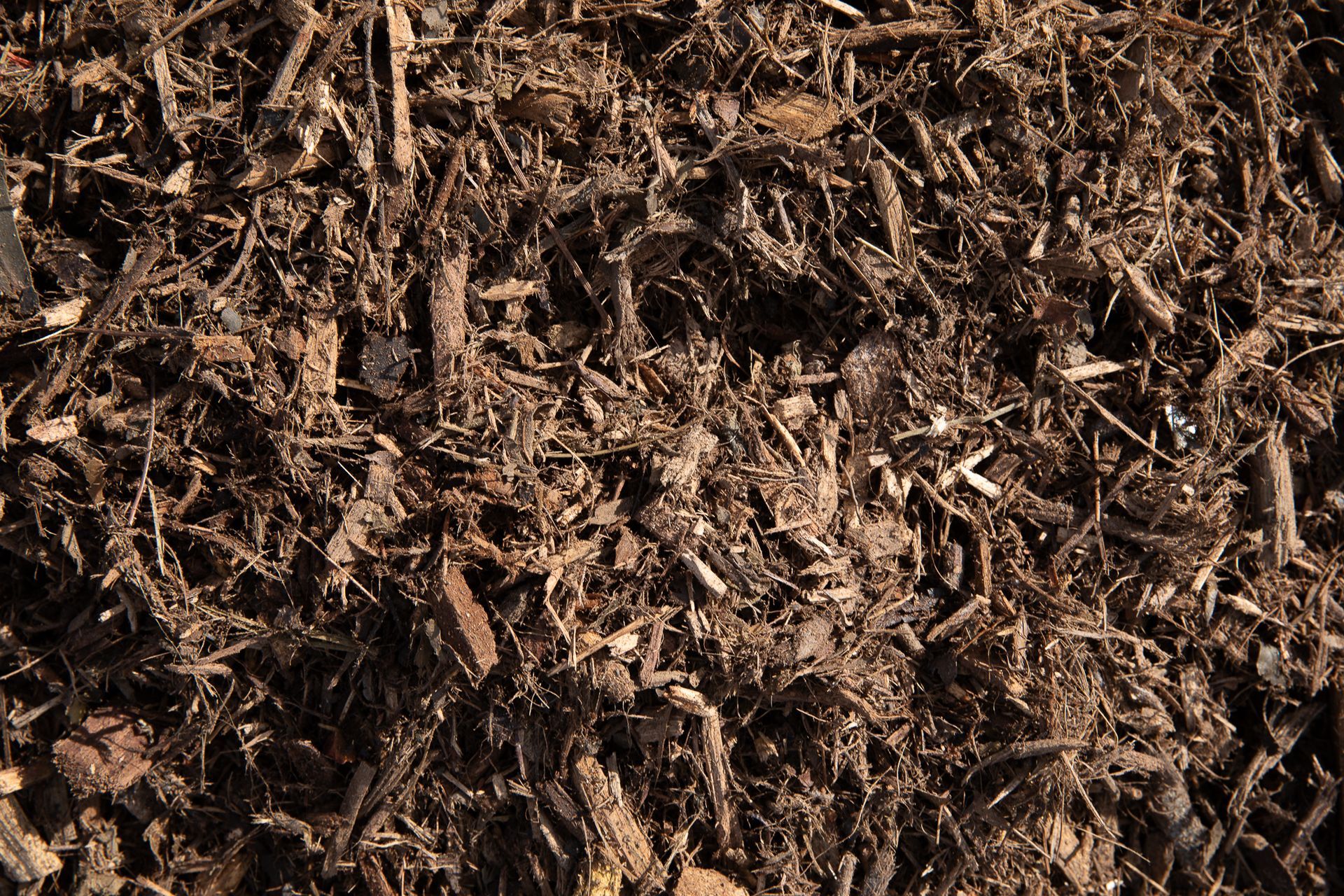
Mulching is one of the most effective ways to improve the health and appearance of your garden, but to get the best results, it's essential to apply mulch correctly. In this blog post, we'll provide a step-by-step guide to mulching and highlight some common mistakes to avoid, ensuring your garden thrives. Step-by-Step Guide to Mulching Step 1: Choose the Right Mulch The first step to successful mulching is selecting the right mulch for your garden. Consider the following factors: Purpose: Determine whether you need mulch for moisture retention, weed control, aesthetic appeal, or a combination. Type: Organic mulches (like wood chips, bark, straw, or compost) are great for improving soil health, while inorganic mulches (such as gravel, stones, or landscape fabric) are ideal for long-term weed control and areas with heavy foot traffic. Step 2: Prepare the Area Before applying mulch, it's crucial to prepare the area properly: Weed Removal: Remove any existing weeds by hand or with a hoe. Applying mulch over weeds will be less effective, as some resilient weeds can push through the mulch layer. Soil Preparation: Loosen the soil with a rake or garden fork, and, if needed, add compost or other soil amendments to improve soil quality. Edging: Use an edging tool or spade to create a clear edge around the mulching area. This helps keep the mulch contained and prevents it from spilling into unwanted areas. Step 3: Apply the Mulch Once the area is prepared, it's time to apply the mulch: Layer Thickness: Spread mulch evenly over the soil surface. A layer of 2-4 inches is generally recommended. Thicker layers are suitable for weed control, but avoid going overboard as too much mulch can suffocate plant roots. Avoid Mulch Volcanoes: When mulching around trees and shrubs, avoid piling the mulch up against the base of the plant (a practice known as creating "mulch volcanoes"). Instead, keep the mulch 2-3 inches away from the trunk or stem to prevent moisture buildup and rot. Smooth and Level: Use a rake or your hands to smooth and level the mulch, ensuring even coverage. This helps create a uniform appearance and prevents water from pooling in certain areas. Step 4: Water the Mulch After applying the mulch, water it thoroughly to help it settle into place. This also helps to start the decomposition process for organic mulches and reduces the risk of mulch blowing away in windy conditions. Step 5: Maintain the Mulch To keep your mulch effective, regular maintenance is key: Replenish as Needed: Organic mulch will break down over time, so you'll need to add a fresh layer every year or as needed to maintain the desired thickness. Inspect for Pests: While mulch is generally beneficial, it can sometimes attract pests like termites or rodents. Check your mulch periodically and address any pest issues promptly. Fluff the Mulch: Mulch can become compacted over time. Fluffing it with a rake or garden fork helps improve air circulation and maintain its effectiveness. Common Mistakes to Avoid When Applying Mulch To ensure your mulching efforts are successful, avoid these common mistakes: Using the Wrong Type of Mulch: Not all mulch is created equal. Using the wrong type for your garden needs can lead to poor results. For example, using fine mulch in a windy area can result in it being blown away, while coarse mulch may not retain adequate moisture for delicate plants. Applying Too Much Mulch: While a thick layer of mulch can effectively control weeds, too much can suffocate plant roots, leading to poor growth or even plant death. Stick to the recommended 2-4 inches. Mulch Volcanoes: Piling mulch against tree trunks or plant stems can lead to moisture buildup and rot. Always leave space around the base of plants. Ignoring Soil Preparation: Mulching over compacted or poor-quality soil will not yield the best results. Prepare your soil before applying mulch. Neglecting Maintenance: Mulch needs to be maintained to stay effective. Failing to replenish or fluff mulch can reduce its benefits over time. Conclusion Applying mulch properly is key to maximizing its benefits in your garden. By following this step-by-step guide and avoiding common mistakes, you can enhance the health and appearance of your plants while reducing maintenance and water usage. Whether you're using mulch to retain moisture, control weeds, or improve soil health, applying it correctly will ensure your garden thrives for future seasons.


